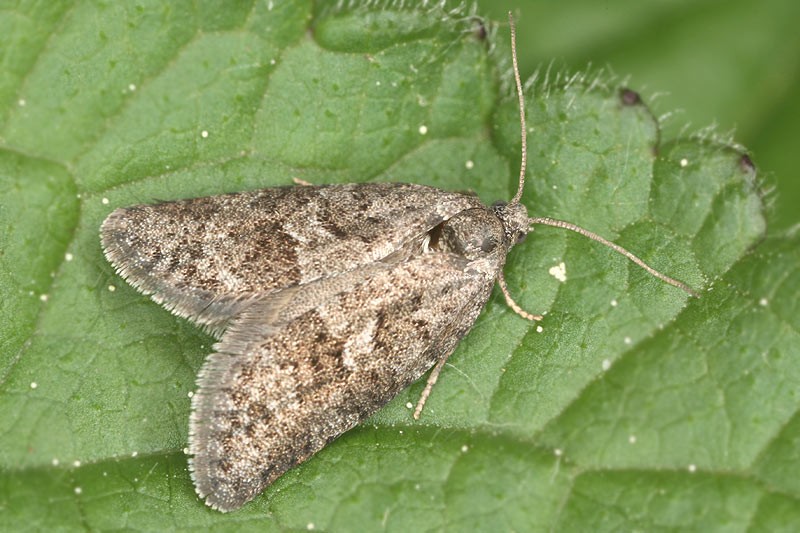Flax tortrix
(Cnephasia asseclana)

Description
Cnephasia asseclana, the flax tortrix, is a moth of the family Tortricidae. It is found all over Europe. The wingspan is 15–18 mm. Adults are on the wing from June to August. The caterpillars feed on a wide range of herbaceous plants and even dry leaves, and can become a pest. They initially mine the leaves. Later they spin together leaves or flowers for pupation. The flax tortrix is part of a cryptic species complex, and its taxonomy has been quite confused. For long, it was known as "C. wahlbomiana", a name that has led to many misidentifications (see below) until it was finally suppressed in favor of C. virgaureana. That, however, subsequently turned out to refer to the same species as the earlier-described C. asseclana, and thus the latter name became the senior synonym. Cnephasia is a genus of tortrix moths (family Tortricidae). It belongs to the subfamily Tortricinae and therein to the tribe Cnephasiini, of which it is the type genus. The type species around which Cnephasia was established by J. Curtis in 1826 (in the explanations to plate 100 of his British Entomology) was claimed to be "Tortrix logiana". However, this was a misidentification; the name of T. logiana (described by C.A. Clerck in 1759 and nowadays called Acleris logiana) was until the early 20th century frequently applied to related species in error. Curtis simply repeated the mistake of A.H. Haworth, who had in his 1811 volume of Lepidoptera Britannica discussed a Cnephasia under Clerck's name, but the original misidentification may well go back to Linnaeus' treatment of "T. logiana" in Systema naturae. Eventually, this was resolved, and the type species of Cnephasia was determined to be the tortrix moth described as Olethreutes pasiuana by J. Hübner in 1822.
Taxonomic tree:







